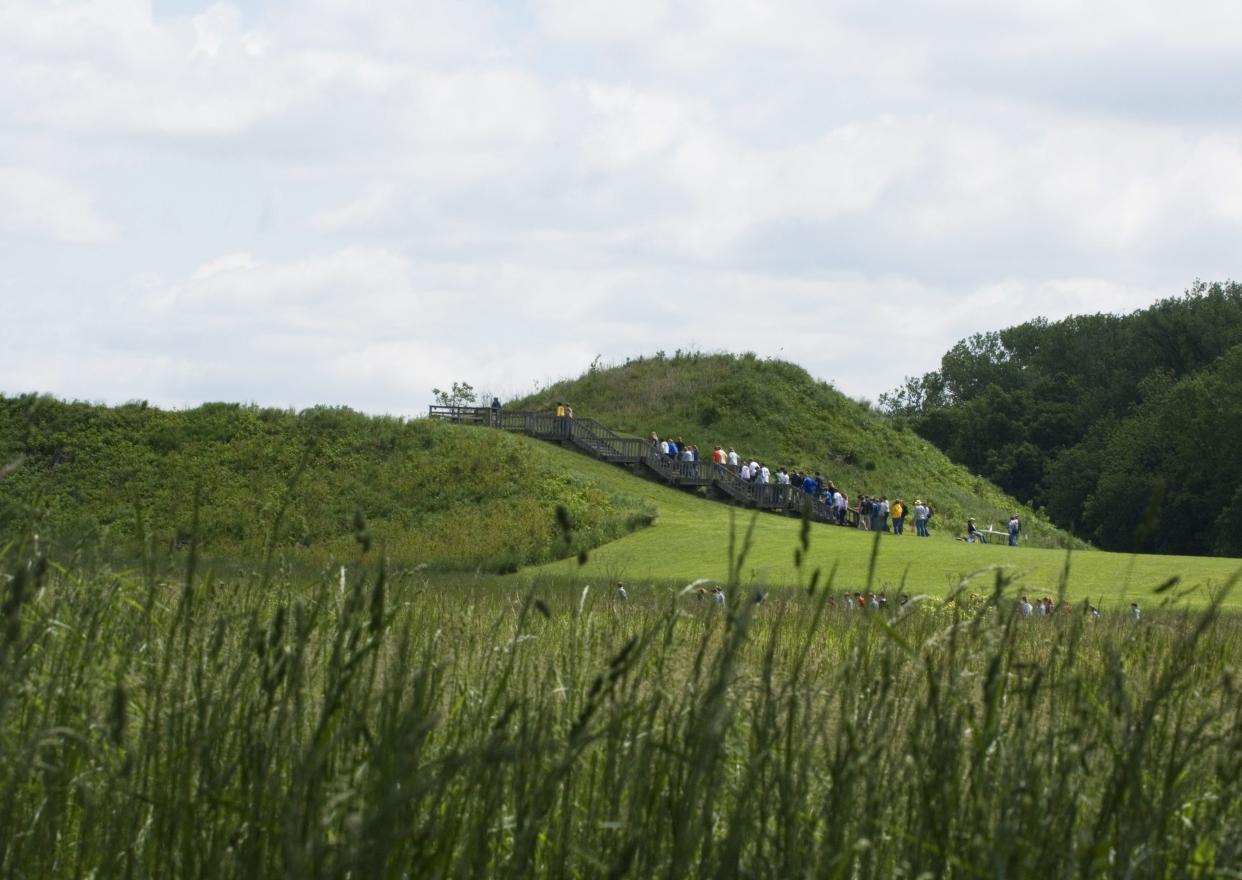Archaeology: Alignment, artifacts connect Indiana's Angel Mounds to Ohio's Hopewell culture

Angel Mounds, located along the Ohio River in southwestern Indiana, was an important center of the Mississippian culture between about AD 1000 and 1450. This ancient American Indian town sprawled across more than 100 acres and by AD 1200 may have been home to as many as 3,000 people.
Elizabeth Watts Malouchos, with the Illinois State Archaeological Survey, led an investigation of Angel Mounds that revealed important connections to the Hopewell culture that preceded Angel Mounds by nearly a millennium. The results of her team’s research appeared last year in the Journal of Archaeological Science: Reports.
Previously, it was claimed that Mound A, the largest mound at the site, was aligned to the northern minimum moonset. The Moon has an 18.6-year-long cycle of moonrises and moonsets during which the points on the horizon marking those rises and sets shift from a month at one end of the cycle when the northernmost and southernmost rises and sets are at their extreme northern and southern limits, to a month, more than nine years later, when those rises and sets are at their minimum northern and southern points.
According to Watts Malouchos and her colleagues, Mound A’s lunar alignment likely indicates a religious connection with Cahokia, the largest city in the Mississippian world, which also has lunar alignments encoded into its architecture.
The “Angel Axis” alignment has been found at other Mississippian culture sites across southwestern Indiana. Watts Malouchos and colleagues determined, for example, that nearly one fourth of the residential structures at sites in the region surrounding Angel Mounds also were aligned to the northern minimum moonset. These alignments, which are found in both religious and secular architecture, served to connect the Mississippian people to cosmic rhythms, but they also may represent a link to the traditions of their ancestors in the middle Ohio valley.

Many of the monumental Hopewell earthworks, built between AD 1 and 400, such as the Newark Earthworks in central Ohio, include alignments to the maximum and minimum lunar rise and set points. So the Mississippians may owe their knowledge of the lunar cycle, as well as the practice of aligning sacred mounds to key points in that cycle, to their Hopewell ancestors.

Watts Malouchos and her co-authors point to additional evidence that the Mississippian people felt a special connection to the Hopewell culture. For example, archaeologists have found signature Hopewell artifacts, such as spear points and small, flint blades, in Mississippian mounds, houses, and refuse pits. Mississippians must have found these antique tools at Hopewell sites and repurposed them as symbolic links to the past.
Watts Malouchos and her colleagues propose that “region-wide Angel identities were enacted by constructing powerful cosmological architecture that connected regional communities with local histories and broader cosmic orders.”
Archaeologists tend to emphasize differences between cultures over time. And there are big differences between Hopewell and Mississippian societies. For example, the Hopewell lived in small, dispersed communities that cooperated with one another to build their giant ceremonial earthworks; whereas Mississippian cities had leaders much like kings who ruled their kingdoms from palaces built on the flattened tops of their earthen pyramids. Yet the work of Watts Malouchos and her colleagues shows us that, in spite of these differences, and the centuries that separate the two civilizations, they are linked by shared traditions.
Brad Lepper is the Senior Archaeologist for the Ohio History Connection’s World Heritage Program
blepper@ohiohistory.org
This article originally appeared on The Columbus Dispatch: Mound Builders: Indiana site may have connection to Ohio's Hopewell

